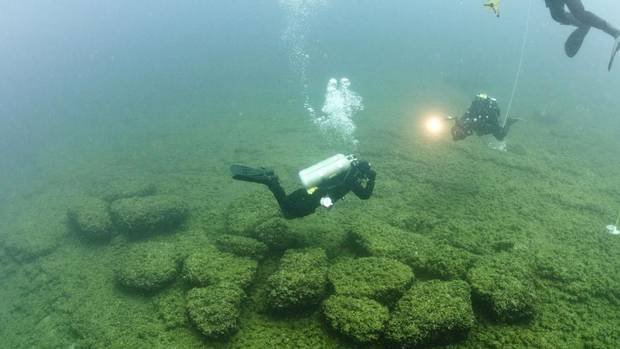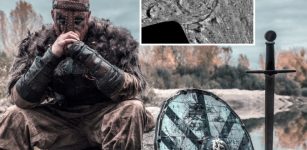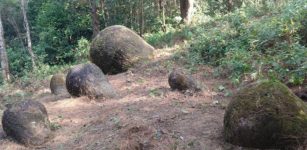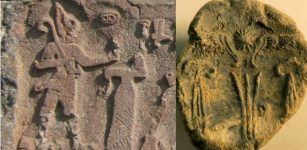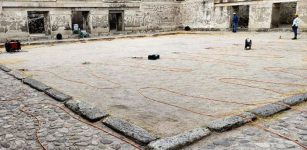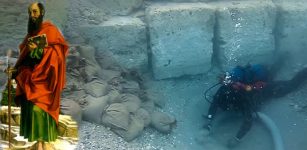Traces Of A 9,000-Year-Old Lost Unknown Civilization Discovered In Lake Huron, Michigan
Ellen Lloyd - AncientPages.com - Archaeologists exploring Lake Huron, one of the five Great Lakes of North America have found traces of an ancient lost civilization that is twice as old as Stonehenge and the Great Pyramids of Egypt.
Many ancient secrets are buried beneath the waters. We still know very little about submerged ancient civilizations that once existed in the distant past.
"Airlifting" can help scientists to learn more about this underwater complex.
This time underwater archaeologists have another exiting opportunity to search for an ancient society that no-one suspected ever existed. It all started when U.S. radar suddenly detected an odd structure at the bottom of Lake Huron. This was the first piece in a puzzle that led to a 9,000 year old discovery.
O'Shea, a professor of anthropology at the University of Michigan, noticed the peculiarity and through a leap of innovative thinking concluded that the structure was perfect for caribou hunting corridors. He then assembled a team to explore the ridge and what he found was groundbreaking.
As it was reported underwater archaeologists have seemingly found what was once a dry land corridor connecting northeast Michigan and southern Ontario. Scientists say the main feature, dubbed the Drop 45 Drive Lane, is the most complex hunting structure found beneath the Great Lakes to date. The 9000-year-old, limestone structure is comprised of two parallel lines of stones that lead to a cul-de-sac lined with natural cobble. If the findings are correct it would make the hunting complex twice as old as Stonehenge.
Three circular hunting blinds are built inside the stone lines with additional alignments that were most likely used to corral caribou. Researchers say the structures around Drop 45, in addition to the presence of chipped debris from repairing stone tools, provide "unambiguous evidence" for the intentions of the hunting wall.
According to Dr. Lisa Sonnenburg, a geoarcheaologist at the University of Michigan sediment at the bottom of Lake Huron shows several signs that point to the existence of a submerged hunting complex that is more than twice as a old as Stonehenge and the Great Pyramids of Egypt. Dr. Sonnenburg and her team are now attempting to establish a direct link between to one of the most shadowy periods in prehistory. "We don't know a lot about these people," Dr. Sonnenburg said. "That's what makes it exciting."
Archaeological evidence from various locations suggests that people have been living in North America for at least 13,000 years, when an ice age population known as the Clovis culture was widespread across the continent. At some point, that population transitioned into diverse groups of hunter-gatherers that are the ancestors of present-day native Americans, but little is known about this transition period.
This exposed the 200-kilometre-long Alpena-Amberley Ridge, which stretches eastward from the Michigan side of the lake to Point Clark, near Kincardine, Ont. We really don't know what is hidden beneath the waters of Lake Hurron, but there are methods scientists can use to learn more about this interesting discovery. Using an underwater excavation technique known as "airlifting," the archaeologists have started systematically vacuuming small sections of the lake bottom to gather what may have been deposited there.
The sediment scientists pull up is screened and carefully examined for evidence of what or who may have once lived on the ridge.
So far, the team says what it has found this year fits with the caribou hunting scenario, but the real hunt is just beginning and could eventually lead across the lake.
"It's a huge area and there's so much more," Dr. Sonnenburg said. "Ideally, I'd like to get back and look at the Canadian side and fill in the gap on that end."
This discovery makes you wonder how many more long lost civilizations are resting at the bottom of oceans and lakes world-wide.
Written By - Ellen Lloyd - AncientPages.com


